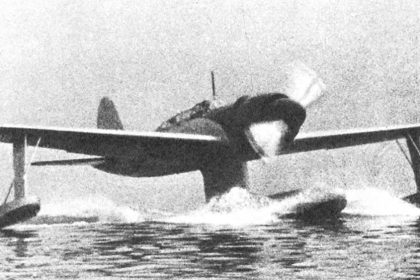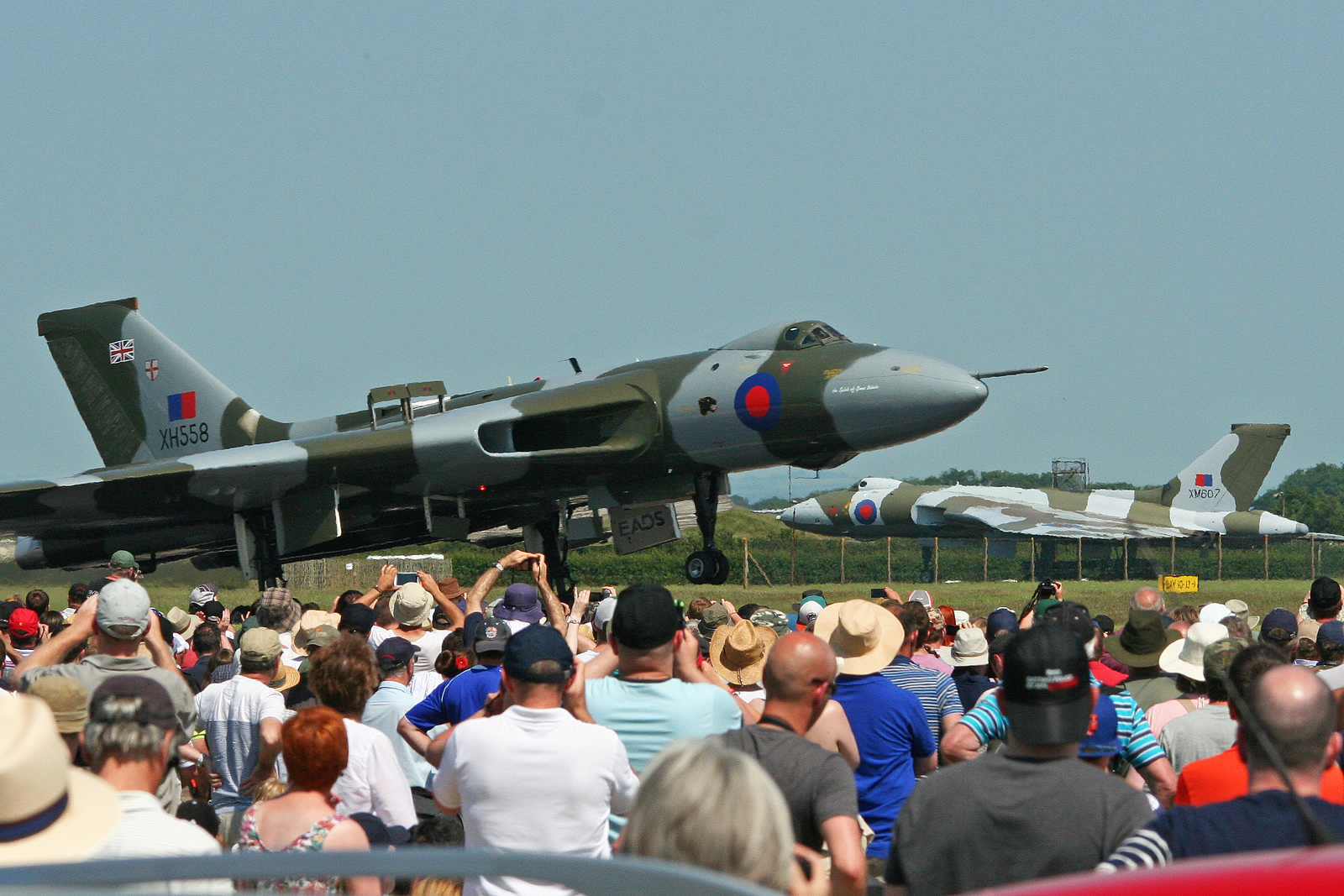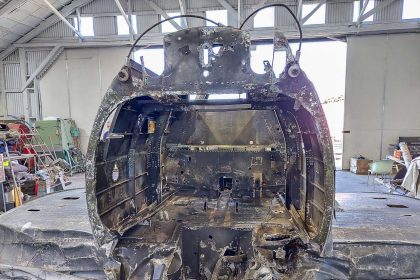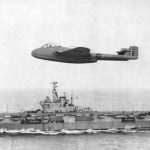By Nigel Hitchman, with additional material by James Kightly
A rare Great War era American fighter, the Thomas Morse S4C Scout 38898, N3307T, has taken to the air once again in the hands of Andrew King at the 2023 Ala Doble fly-in, on 28 September 2023. Our reporter, Nigel Hitchman, was there and brought us the full story.
Thomas-Morse Scout 38898 was originally operated by the US Army at Rockwell Field, San Diego in 1918. The Scouts, generally known as ‘Tommys’ were used as advanced trainers in the USA. Ironically the ‘Tommys’, despite the type’s good looks, had pretty poor handling characteristics.
The Thomas Brothers company was founded in 1910 at Hammondsport New York. By 1915 they had moved to Ithica, NY, and built a tractor biplane the T-2, designed by engineer Benjamin Douglas Thomas, an expatriate Englishman. Thomas, despite the name, was of no relation to the company founders, but had worked for Vickers and Sopwith in England, and then Curtiss in the US. No less than 24 T-2 biplanes were sold to British forces, but financial difficulties saw them merge with the Morse Chain Company in 1917 becoming the Thomas-Morse Aircraft Company. They were then successful in selling their S-4 design to the US Army (and Navy) as an advanced trainer.
After the war, Scout 38898 was sold to the Wilson Aero Corp of Burbank. Roy Wilson was one of the chief pilots on the film ‘Hell’s Angels’. The Scout then went to Paul Mantz, and in 1936. While the records are incomplete, this S-4C was almost certainly used in films such as ‘Dawn Patrol’ and ‘Hell’s Angels’.
A selection of images of the Thomas-Morse Scout 38898 when numbered as ‘502’. [Via the San Diego Air & Space Museum Flickr feed.]
Skeeter Carlson acquired the basket case from Paul Mantz in 1952 in a trade for a Ryan Brougham that Skeeter owned, which Mantz wanted for the ‘Spirit of St Louis’ film. Skeeter rebuilt the Tommy-Morse, first flying it in 1964, and flew it for some time in the 1960s and 1970s initially with a Ken Royce radial engine, rather than the type’s original rotary. He flew it in many airshows within reach of his Spokane, WA base. An original 80hp Le Rhone 9C was obtained and fitted in the early 1970s, and it flew irregularly into the 1980s. After Skeeter died, the Thomas-Morse S4C was bought by George Jenkins for his Eagles Mere Aircraft Museum where it was displayed for some years until being sold to Walt Bowe in early 2023.
Scout 38898 was trucked to California and re-assembled in April 2023 with some initial work done to get it flying again. The engine was run, and it made a short run and a hop down the runway. Andrew King drew up a list of what other tasks needed to be carried out to get it airworthy again and a plan was made. Those tasks were carried out in the days before the Ala Doble Ranch flying days and Marginal Aviation’s “Last Ditch” fly-in – on the Wednesday evening it was pulled out of the hangar to start the engine, but it wouldn’t perform. The investigation found the magneto switch was grounded out, so the switch that had worked previously was swapped for another, and then on Thursday morning a successful engine run was carried out.
With everything then buttoned up, and all of the rest of the tasks accomplished, it was time for the first flight, with Andrew now moving from ‘Chief Engineer’ to ‘Test Pilot’! Run-up proved good and it was taxied into position on the runway with the new tailskid modification providing good directional control. Power was applied and the aircraft started off down the runway – notably taking longer than expected to get airborne (compared to rotary powered aircraft seen at Shuttleworth, which quickly jump into the air) but it climbed steadily and Andrew flew around above the airfield feeling out the controls and seeing how the aircraft behaved. After 20 minutes, he came down for a low approach and go-around down the runway and then came to land. It landed slightly tail first but tracked straight under control, and he had enough authority to make a 180 turn on the runway and taxi back.
The assessment was that it was very tail heavy, with a lot of forward stick force required for the whole flight, even though there was already a bungee cord fitted giving forward force on the stick. The ailerons are heavy, but the engine control was fine, except for the blip switch being on the back side of the top of the stick, where you want to put your hand to give the most forward force – this causing a few involuntary blips and engine cuts during the flight! No defects were found from the flight and it was already expected it would be tail heavy, as that’s what everyone who had flown one had said. Andrew also thought the performance would be better.
After a good look over, adjustments were made to the elevator trim, and the ailerons were re-rigged to have less droop – and hopefully more effect. There was no flying Friday due to a gusty crosswind, but Saturday morning the weather was perfect, so another test flight was performed. Another 30 minutes in the air, including some air-to-air photos, and it was chalked up as another successful flight, with the rigging changes making a slight improvement. A third, longer flight was carried out Saturday afternoon, including some formation flypast with Walt Bowe’s Curtiss JN-4H Jenny: a unique sight of two original 1918 aircraft flying together.
It was fantastic to see an original Thomas-Morse Scout flying, a great credit to Skeeter Carlson for the original restoration and then Walt for obtaining it and getting it flying, with Andrew doing the bulk of the work and test-flying it. Andrew said it was: “A thrill to fly, but it also flies horribly, especially being so tail heavy – and that also causes it to be unstable in pitch, and the ailerons are slow and unresponsive.”
Frank Tallman wrote in his book ‘Flying the Old Planes’ of his ‘Tommy’ experience: “Throughout the hours that I flew the S4B, I never felt secure, and the adequate rudder, over-large elevators and rock-stiff ailerons felt as far apart as a racehorse and a mule.” Skeeter Carlson had said that the Tommy and his Arrow Sport monoplane were the worst flying airplanes he had flown, but that the Tommy was “thrilling”!
The Thomas-Morse Scout was ordered by the US Army and Navy as an advanced trainer, as there were no obsolete earlier fighters available in the continental USA to use in the role, as were used in other countries. The S-4 (prototype) and 100 production S-4B’s were powered by a 100 hp (75 kW) Gnome rotary, as were the first 51 of the following S-4C’s, the airframe having minor improvements (none of which addressed the dreadful handling). The rest of the S-4C production run of 498 was powered by the more reliable and less combustible 80 hp (60 kW) le Rhône rotary. The US Navy had 10 S-4B and four S-4Cs, with six more S-4Cs converted as seaplane trainers with floats, and designated the S-5. A single S-4E was built as an ‘aerobatic trainer’ with revised tail surfaces but did not go into production.
The ‘Tommy’s designer, Benjamin Douglas Thomas, is seen here between two aviators, probably during the making of a postwar film. He had worked on the design of the Curtiss Jenny prior to joining Thomas-Morse, and thus this Englishman had a hand in two of America’s most important types in the 1910s and 1920s. The Center is a production line of the Scouts stretching as far as the eye can see. On the right is an S-4 modified with an OX-5 engine for racing postwar, carrying the number 5 on the tail. [Via the San Diego Air & Space Museum Flickr feed.]
The surplus ‘Tommies’ available postwar saw a brief boom in civil registered examples, many re-engined (including with the Curtiss OX-5) but as a single seater they were far less useful than the Curtiss Jennies. However, while the S-4C type never saw combat for real, as a ‘single seat fighter’ easily available in America (unlike the actual combat types used in Europe) ‘Tommies’ became a staple of the first American movies about the daredevil pilots of the Great War – most of which were filmed in California, pretending to be France. This was the peak of the type’s career. [The full report on the 2023 Ala Doble fly in will is published here. The report on last year’s event can be found here.]
Over a dozen Thomas Morse S-4s are known to survive, most on display in major American aviation collections. Two are seen above, the S-4C C/No 633 with Kermit Weeks’ Fantasy of Flight in Polk City, Florida (LEFT) and the fuselage of S-4C C/No 38934 on static display at the Cradle of Aviation Museum in Garden City, New York. Still with its original Marlin machine gun, it is on loan from Paul Kotze. [James Kightly & Mike Peel via Wikimedia.]







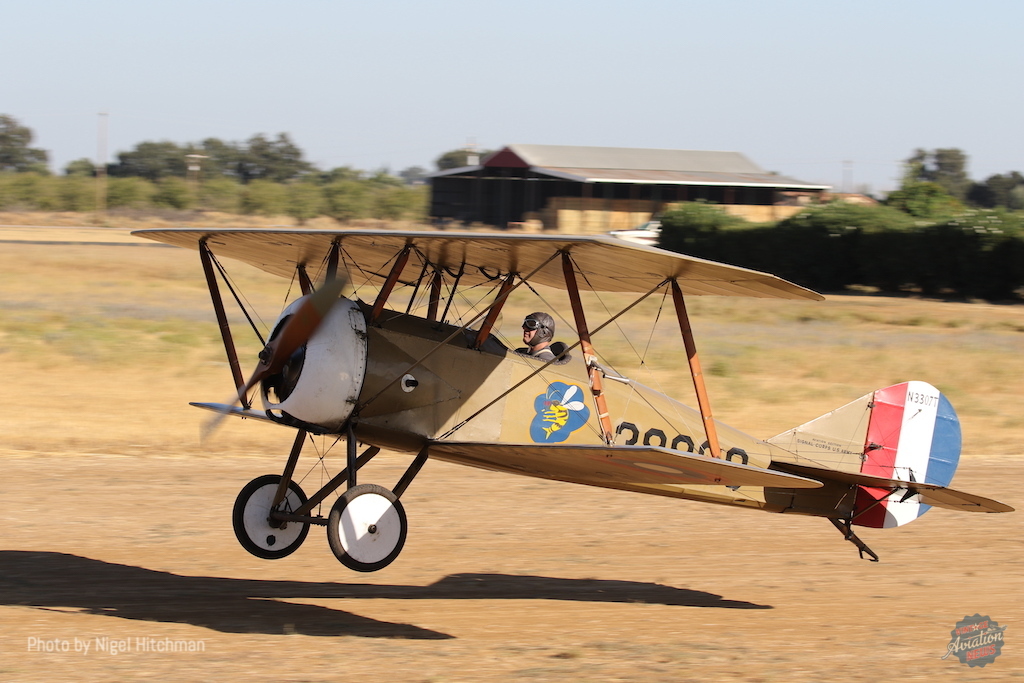

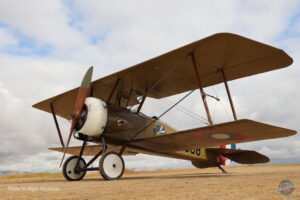
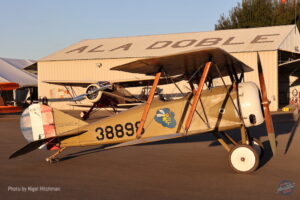


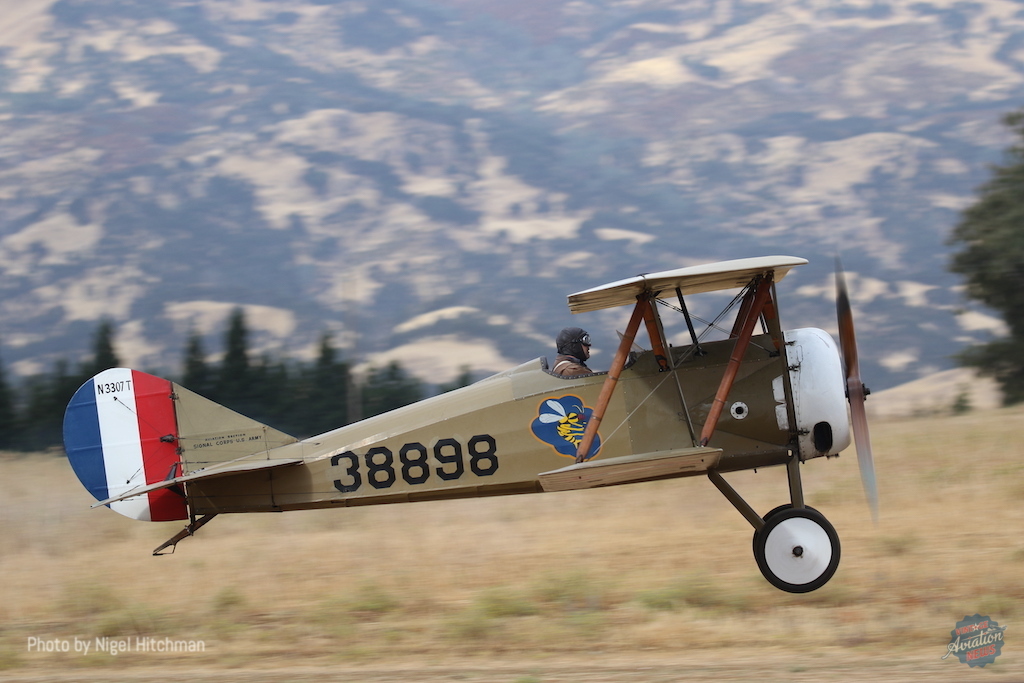
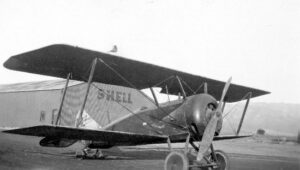
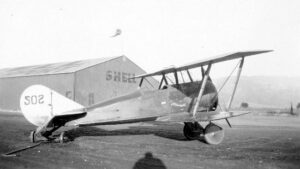
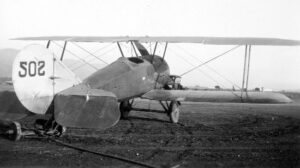
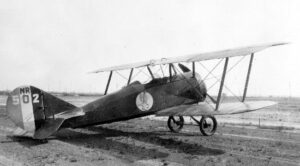
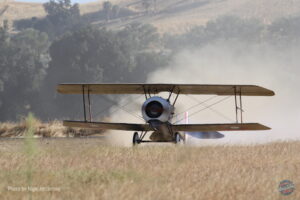

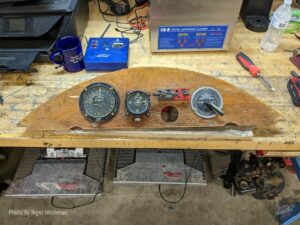
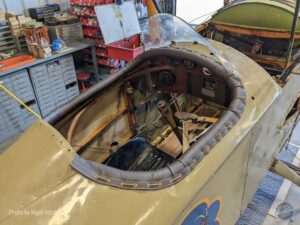
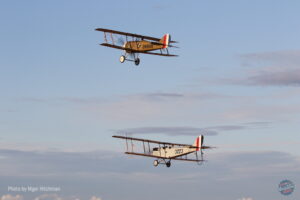
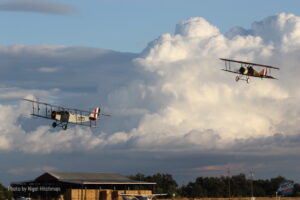
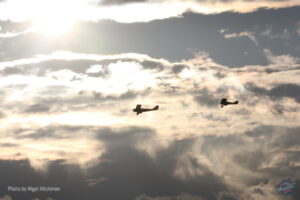
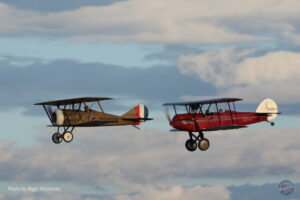
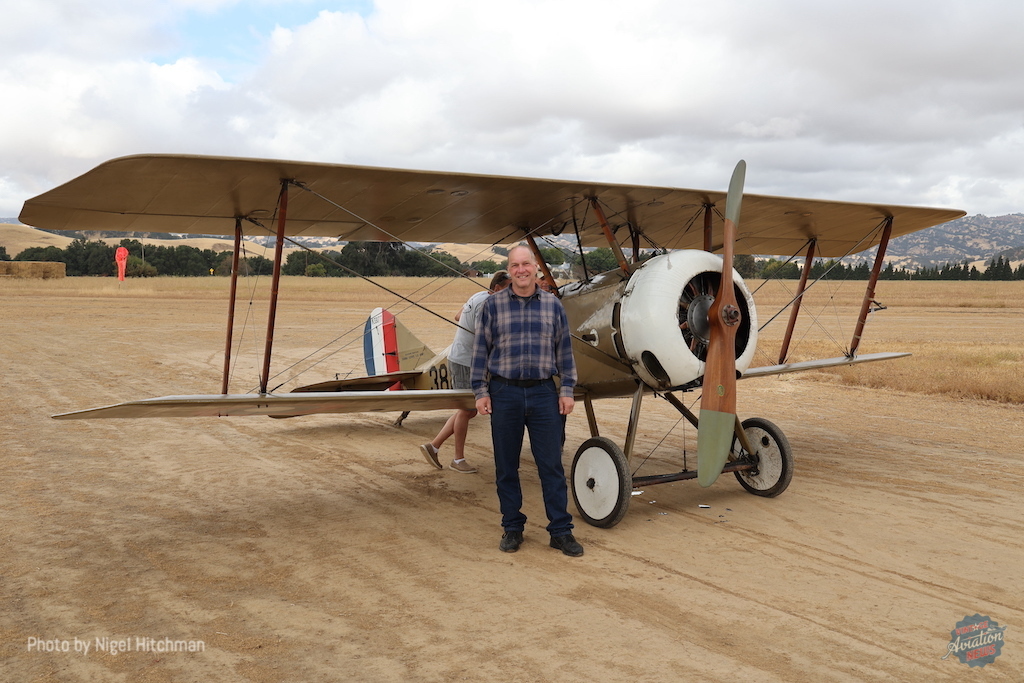
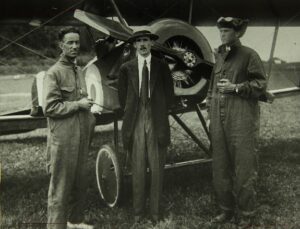

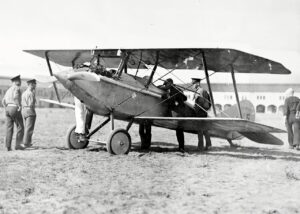
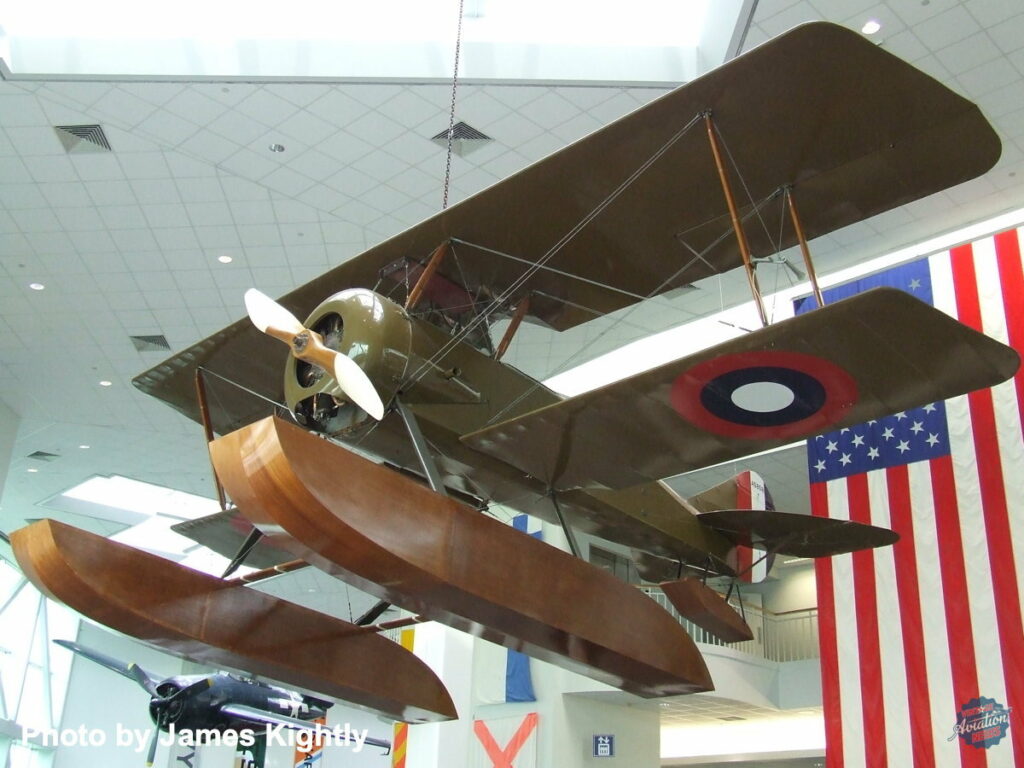



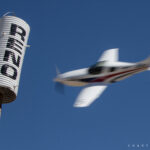
![A GOOD DAY, The Sea Fury Four Ship [Air to Air VIDEO] 35 Sea Fury Four Ship](https://vintageaviationnews.com/wp-content/uploads/Sea-Fury-Four-Ship-150x150.png)
